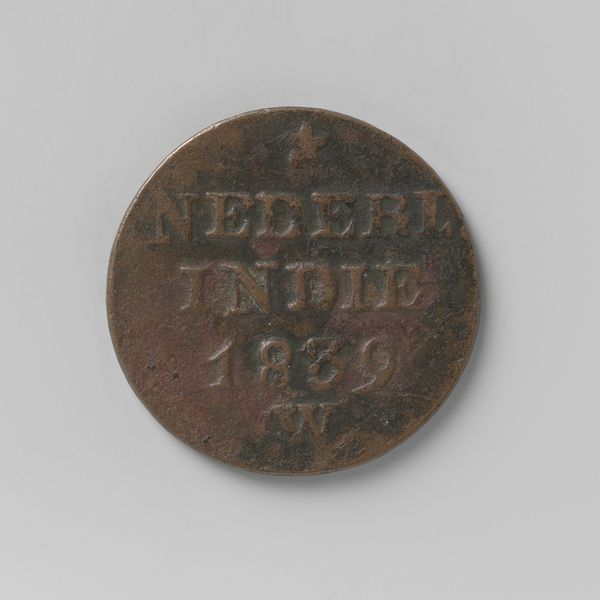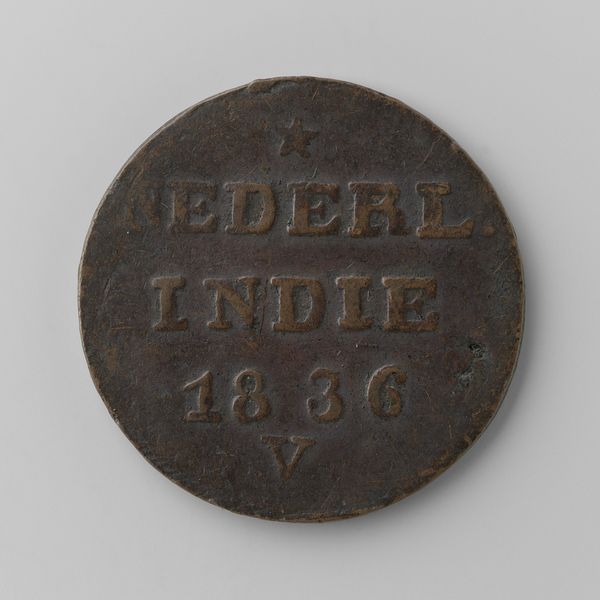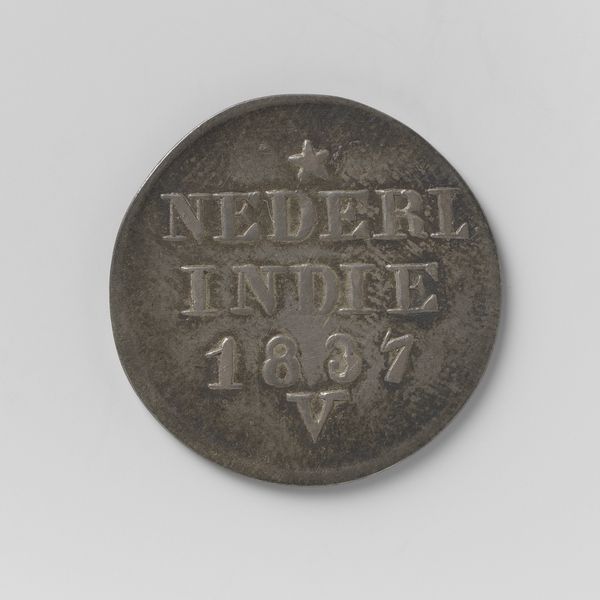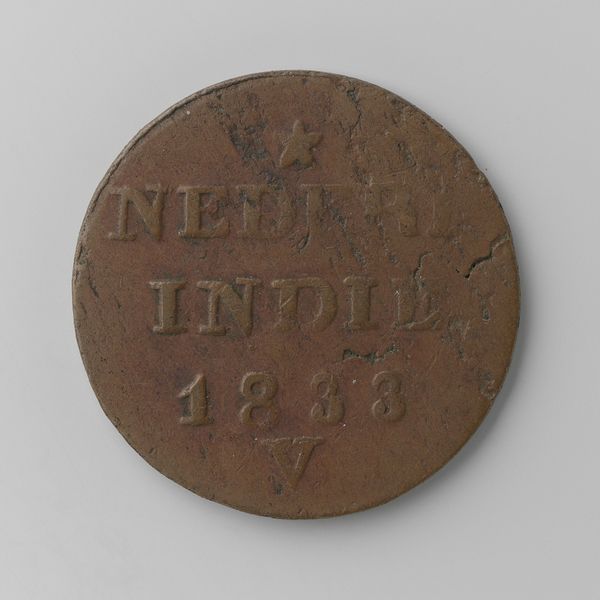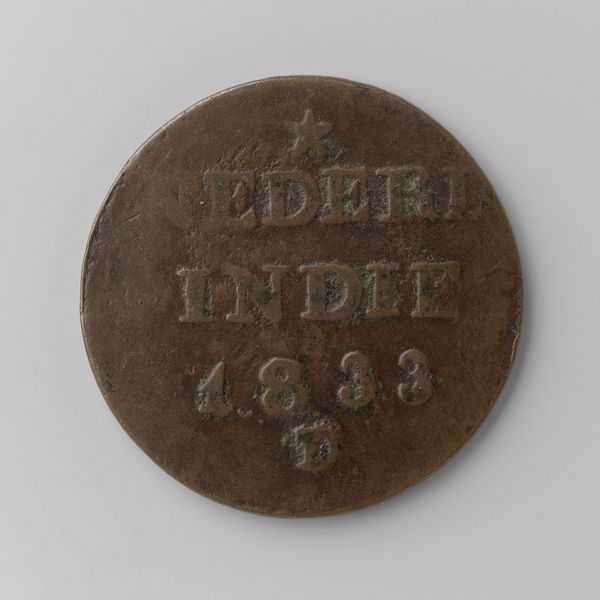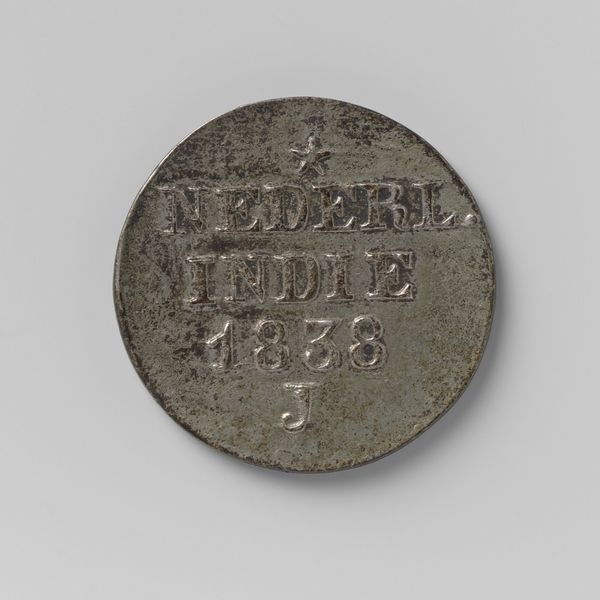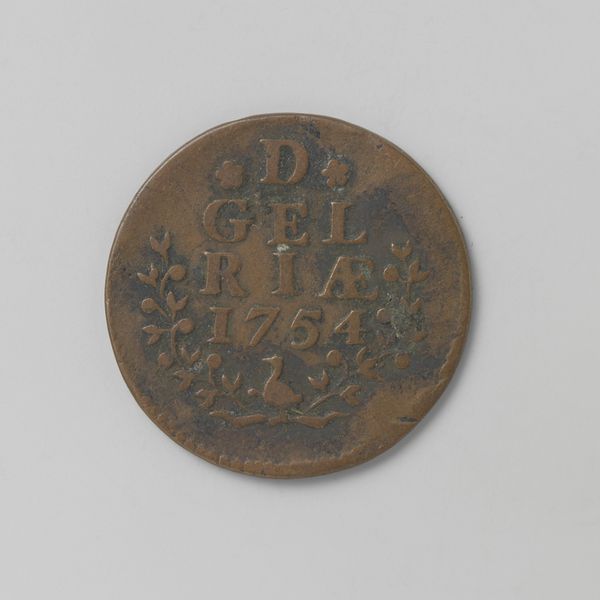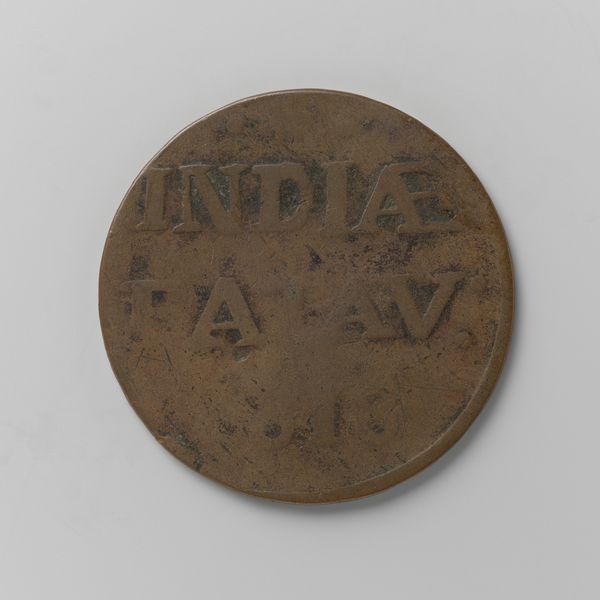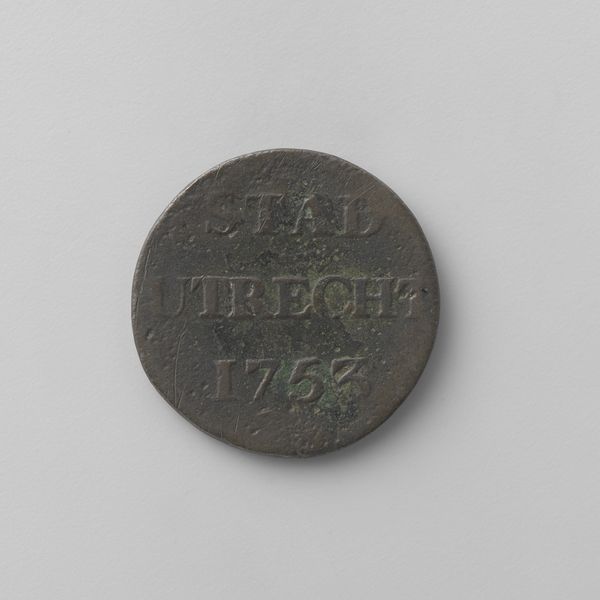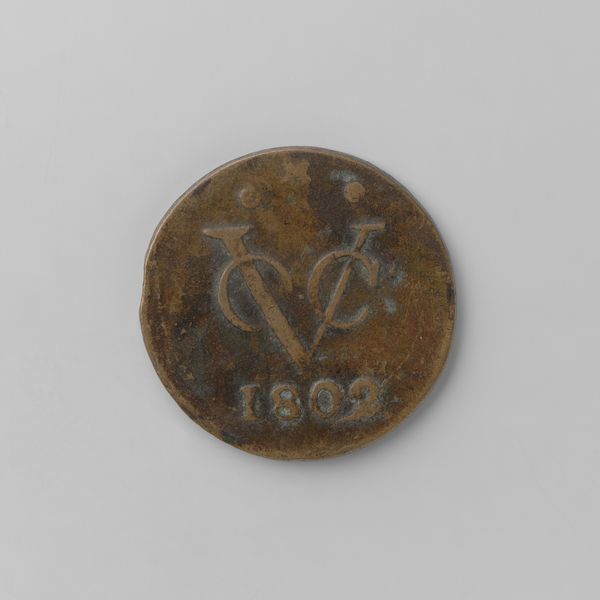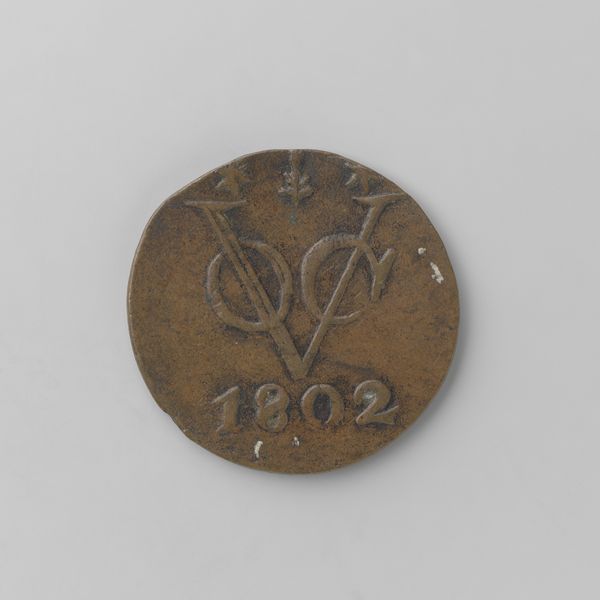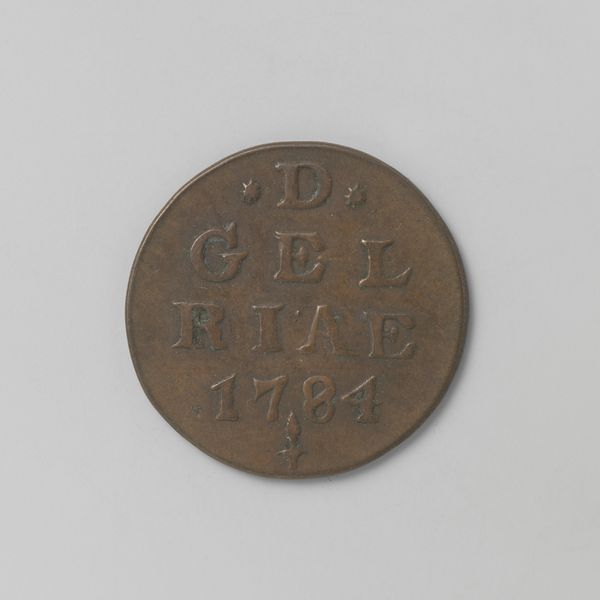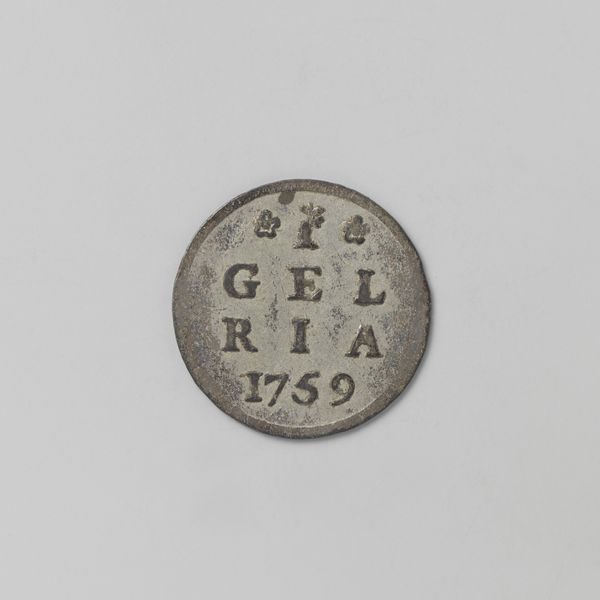
print, metal, etching, engraving
# print
#
metal
#
etching
#
sculpture
#
ancient-mediterranean
#
coin
#
engraving
Dimensions: diameter 2.6 cm, weight 5.75 gr
Copyright: Rijks Museum: Open Domain
Curator: Here we have a copper half stuiver, dated 1825, issued by the Dutch East Indies Company. It offers a glimpse into the material culture of colonialism. Editor: There’s a heaviness to its simplicity. The inscription, the lone star above… it speaks volumes about power dynamics and the claiming of territory. Almost like a brand. Curator: Indeed. The materiality of this coin is fascinating. The etching and engraving, though small, required skilled labor, showcasing the company's investment in even the most minute forms of production and branding. We see an economy of signs embedded in its production. Editor: Right, think of this coin not as a simple object of trade, but as a physical manifestation of colonial authority and capitalist exploitation. How does the metal itself connect to the landscapes mined and people displaced by the Dutch presence in what is now Indonesia? Curator: The wear and tear on the coin's surface also tell a story. Countless transactions, the labor involved in producing goods… What was the precise cost and purpose of it within that complex, colonial, economic web? Editor: Precisely! And beyond the exchange of goods, imagine the control this represented. To hold currency imposed by an external power. A potent symbol of the restructuring of indigenous economies under Dutch control, particularly impacting gendered labor roles. Who controlled the coin, who labored for the coin? Curator: The design is spare but intentional: the inscription "Nederl. Indie," topped with a star and finalized by the date of issue above the letter S., each carefully punched onto the copper disk. This simple piece speaks of standardization and industrialization, but also manual labor within systems of colonial infrastructure. Editor: So, it asks critical questions: Whose labor, whose profit, and whose narrative are embedded within this object? We should remember it stands as an artifact of cultural imposition, too. Curator: A valuable reminder of how art and objects—even small, utilitarian ones like this—connect to power structures. Thank you for those compelling points to reflect upon. Editor: Absolutely. It underscores how even seemingly innocuous artifacts like this small coin become critical documents in understanding global systems of oppression. Thank you!
Comments
No comments
Be the first to comment and join the conversation on the ultimate creative platform.
